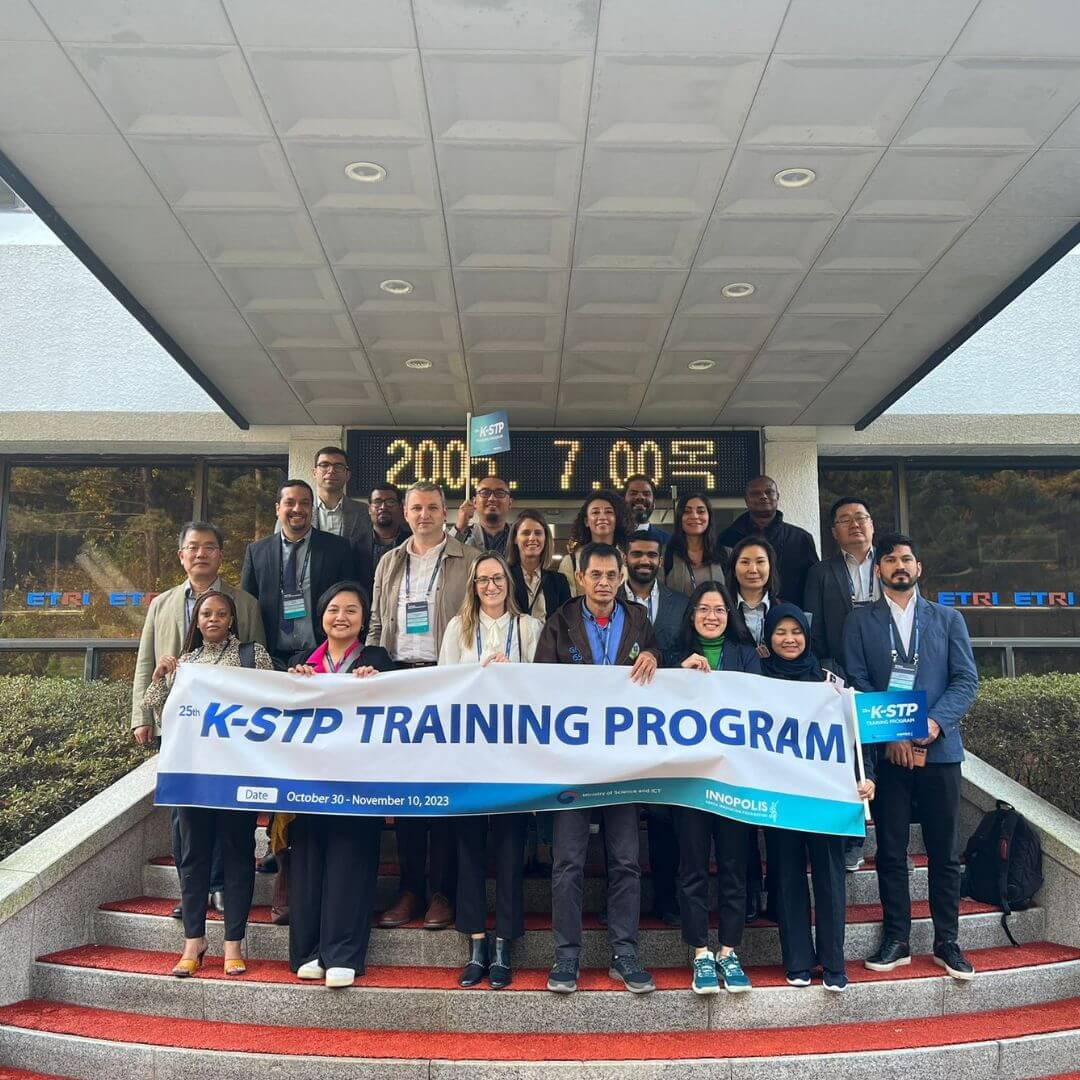How can a country build an economy from scratch by fostering innovation and technology? The Korean story is the perfect example of that.
During the last two weeks, our colleague Jelena Petrović had a great opportunity to be in South Korea as part of the K-STP Management program, organized by Korea Innovation Foundation (Innopolis), based in Daejeon. She was the first and the only participant from Serbia, representing Science Technology Park Belgrade and exploring what stands behind Korea’s success in transforming the economy through innovation.
Inspired by everything she experienced and learned, in this blog post, Jelena brings her thoughts and takeaways from Korean experience on what ingredients are needed to achieve such a success.
– Being displaced from everyday operations and allowing yourself to detach from the national environment and emerge in another innovation ecosystem is very important for boosting creativity, regaining inspiration, and broadening horizons. Experiencing Korea was very inspirational since it showcased the transformative power of strategic investments in R&D, technological advancements, and commitment to growth. I feel very grateful, first of all, to my organization which nominated me for the program, and secondly, to the Korean Innovation Foundation team for all of their hard work in hosting participants from 20 different countries (Europe, Latin America, Asia, and Africa) and giving us access to the most valuable thing in the world- their know-how and experience in building a sustainable and fast-growing innovation ecosystem – Jelena points out.
Here is what led Korea to it:
- Vision is the driving force of progress – „Develop Korea by Science and Technology Independence” was the vision of Korean leadership after the devastating war, Korean President Park (1960s) believed only the nation that develops science and technology could survive and lead the world in modern society and decided to build Daedeok Science Park (hosting today 26GRIs, 7 Universities, and 2.400 companies). In the Korean case, the vision was executed top-down, continuously over 50 years, with increases in science and technology investment from the Government over time.
- Korea was the 2nd poorest country in 1945, while in 2019 was the 10th largest economy in the world – being poor economically does not mean you don’t stand a chance, but only that you need to focus your resources in the way that will create the biggest impact. Focus was an important aspect of Korean economic growth – building light industries and boosting exports in the first period while in parallel building technological capability by focusing mostly on applied research that will help the economy grow proved to be a good strategy in fostering economic development.
- International aid was, after the Korean war, used to build scientific and technological capabilities, despite the initial objection of donors. The aid was used to bring back the talent home and to build the first R&D Institute KIST. In addition, FDIs did not play a big role in Korean economic development.
- Using economic and financial crisis to your advantage and adjusting to seize the opportunity – each 10 years Korea faced challenges, but managed to adapt the economy and continue growing by strategically analyzing its strengths and weaknesses and investing in science and technology.
- Continuity in innovation policy is one of the key elements of growth- The Korean Innovation Foundation celebrated this year 50th anniversary – the continuity was enabled by strong Government support and funding (Innopolis is funded by the Ministry for Science and ICT – total budget in 2021 was 187 million $) and professional bureaucracy (institutional building) which was stable even though governments changed over time.
- Incentives helped the ecosystem of Daedeok Science Town to grow – by special Act only companies/institutes that are part of the Innopolis can become eligible for tax incentives which was an additional push for companies to relocate (for example: income tax & corporate tax benefits: 7 years, property tax benefits: 10 years, eligibility to apply for R&D programs). The whole system supports the development of such areas to succeed.
- Korea is one of the countries with the highest investments in R&D in the world (5% of GDP), while the ratio between private and public investment in R&D has changed over the years in favor of private investment, but only as the industry was growing. Korea expanded its technological capability by educating more researchers and going from 15k researchers in the 60s to around 500k today.
- Technology commercialization – is the first goal of all Government Research Institutes (GRI) and Universities. Every GRI or University has a technology transfer function, researchers are incredibly incentivized to commercialize (50% of royalty goes to the researcher), some institutes even cover the salary for one year of a researcher who wants to try the commercialization path, if the commercialization fails researcher can come back to institution automatically up to 3 years and up to 6 years upon evaluation. If the patent is not commercialized in the period of 5 years – the Institute has to give it for free to a Korean company which is an additional push to commercialize as fast as possible.
- Studying innovation policy and analyzing innovation policy is an integral part of decision-making – at almost every University in Korea, innovation policy is being studied while there are numerous innovation policy think tanks that advise innovation ecosystem stakeholders. In addition to that, across all disciplines at Universities, there are science and technology topics, such as science journalism, innovation policy, future strategy, and similar. All parts of the ecosystem play a role in achieving the vision.

Although it is a developed innovation ecosystem with more than 15000 startups, 200+ VCs, and a strong science base that was continuously being built over the period of 50 years, Korea’s ecosystem faces also several challenges that are the result of rapid economic development:
- Decreasing interest in entrepreneurship and STEM – % of young people who want to start a business is at a low level and less and less young people decided to study STEM compared to medicine or law.
- High investments in R&D are not correlated with research output in terms of commercialization which is considered to be an average level, thus additional efforts will be invested to enhance even further the technology transfer and commercialization.
- Regional inequalities – high concentration of Seoul Metropolitan area, one-quarter of the population live in Seoul, and 2/3 of banking and R&D investment based in Seoul. There is a big difference in economic standards between Daejeon and Seoul and other regions, which is why the Government introduced new innovation policies against regional inequality (regional strategy industries and range of regional support organizations: technology parks, inno-towns, etc.)
- Social challenges that came with fast economic growth – increased prices of housing, and social isolation impact the wellbeing of people, especially youth.
The Korean case in the best way demonstrates the power of investing in science and technology and the impact that can have on economic development. As a result, Korea is the only country in the world that transformed from aid recipient to aid donor which is a true inspiration for all developing countries in the world.



